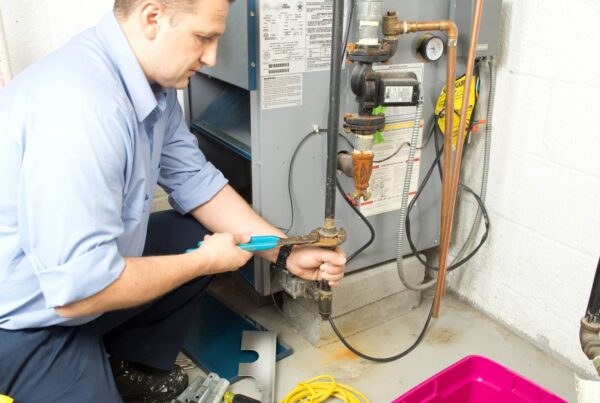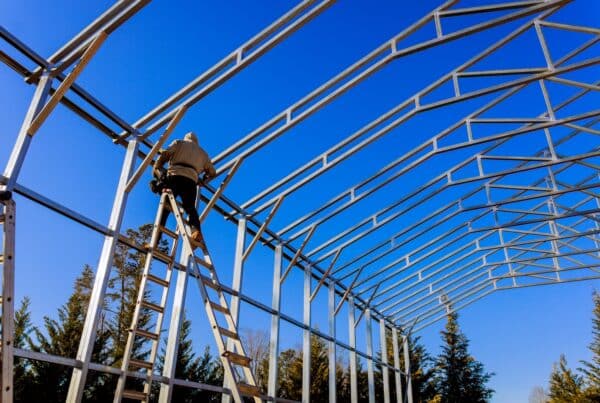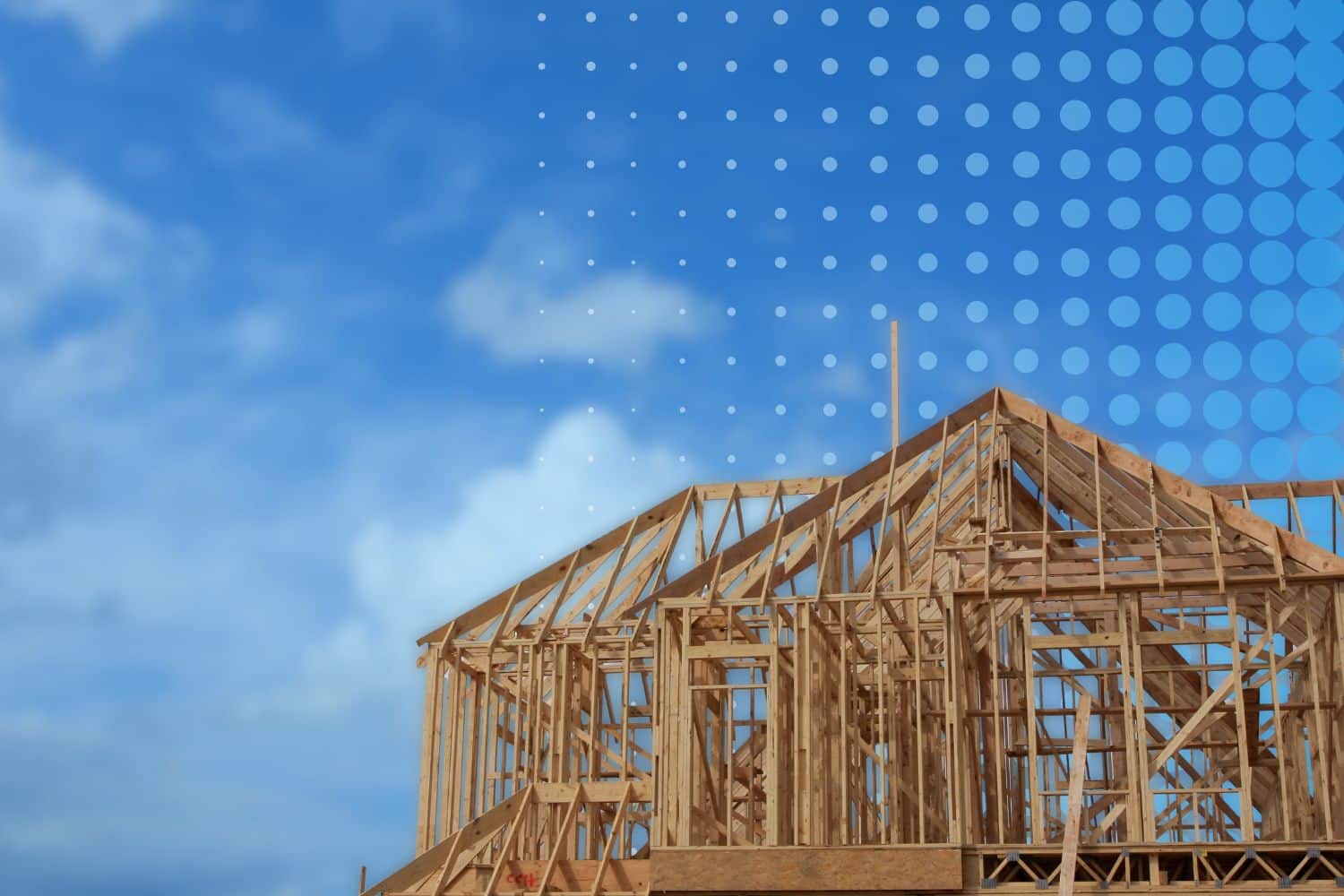
Many expect a new home to be perfect, meaning they don’t need a home inspection. The paint is fresh, the fixtures shine, and every corner looks flawless. Yet studies show that even brand-new homes often have issues. Construction defects appear in more than 25% of new builds within the first two years of ownership.
These problems range from cosmetic flaws to significant safety hazards. A professional home inspection on a new build is your best chance to confirm that everything is safe, functional, and built to last.
Why a New Build Still Needs an Inspection
City or county inspectors work to ensure homes meet minimum building code standards. Their visits are often brief and focused on specific checkpoints, not the overall craftsmanship or performance of the home.
A private home inspector spends several hours on one property, reviewing both the visible and accessible areas for quality and safety. This extra time and detail often uncover issues such as:
- Loose electrical connections or mislabeled breakers
- Plumbing leaks under sinks, in crawl spaces, or at water heaters
- Roof shingles missing proper flashing
- HVAC ducts that don’t connect or have effective seals
- Missing insulation in attics or behind walls
- Windows and doors that stick, leak air, or fail to latch
- Grading or drainage problems that send water toward the foundation
Catching and fixing these issues before moving in is far easier and less costly than repairing them later.
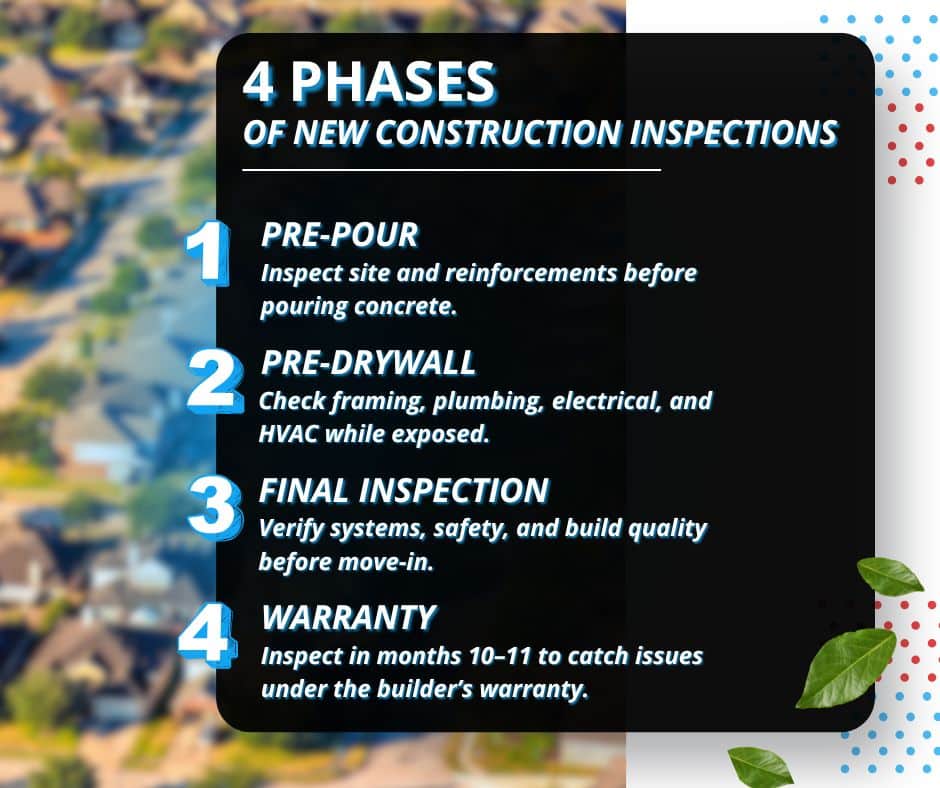
Phases of New Construction Inspections
Phase 1: Pre-Pour Foundation
Before concrete is poured, we inspect the foundation site to confirm proper preparation, reinforcement placement, and grading. This is your first opportunity to ensure the structural base of your home is built to last.
Phase 2: Pre-Drywall Inspection
After framing is complete and rough plumbing, electrical, and HVAC systems are installed, we examine these components while they are still exposed.
This step allows us to identify design errors or installation issues before they go behind drywall.
Phase 3: Final Inspection
Performed before your final walkthrough, this phase is essentially a full residential home inspection. We verify that all systems work as intended, safety features are in place, and overall workmanship meets expectations.
Phase 4: Warranty Inspection
Most builders offer a one-year warranty for certain defects. We recommend scheduling this inspection in months 10 or 11 after move-in. This way you can catch, document, and address any issues while you are still within the warranty period.
What Does a New Build Inspection Highlight?
A comprehensive new build inspection addresses all major systems, with a close eye on installation quality.
Foundation and Structure: Inspectors check for cracks, uneven settling, and framing issues that could affect long-term stability.
Roof and Attic: Shingles, flashing, vents, and attic framing are inspected. Proper ventilation and insulation are confirmed, which helps prevent mold and heat loss.
Exterior Surfaces: Siding, brick, stucco, and trim are reviewed for correct installation and weatherproofing.
Windows and Doors: Operation, sealing, and locks are tested to ensure energy efficiency and security.
Plumbing Systems: All fixtures are tested for leaks, drainage speed, and water pressure. Visible pipes and water heater installation are reviewed for compliance and safety.
Electrical Systems: Inspectors examine the electrical panel, breakers, grounding, and outlet performance. The U.S. Fire Administration reports that electrical issues cause more than 24,000 residential fires each year, which makes early detection critical.
HVAC Systems
Heating and cooling units are tested for performance, airflow balance, and duct sealing.
Interior Finishes
Walls, ceilings, floors, cabinets, and trim get a check for defects or poor workmanship.
Real Examples of Issues Found in New Builds
Even reputable builders can make mistakes. Inspectors often discover…
- Roof vents without flashing, increasing leak risk
- Hot and cold plumbing lines reversed
- Stair railings without secure anchors
- Missing attic insulation in corners or edges
- Drain pipes installed with improper slope
- Blocked ventilation from misplaced insulation
Each of these problems can cause costly damage or safety hazards if left unresolved.
Step-by-Step: The New Build Inspection Process
- Scheduling
Book your inspection early to ensure availability. For pre-drywall, coordinate with your builder’s schedule. - On-Site Review
Your inspector walks the entire property, inside and out, testing systems and documenting findings with photos. Attending in person allows you to see issues firsthand. - Reporting
You receive a detailed written report outlining all concerns. This serves as a record and a basis for repair requests.
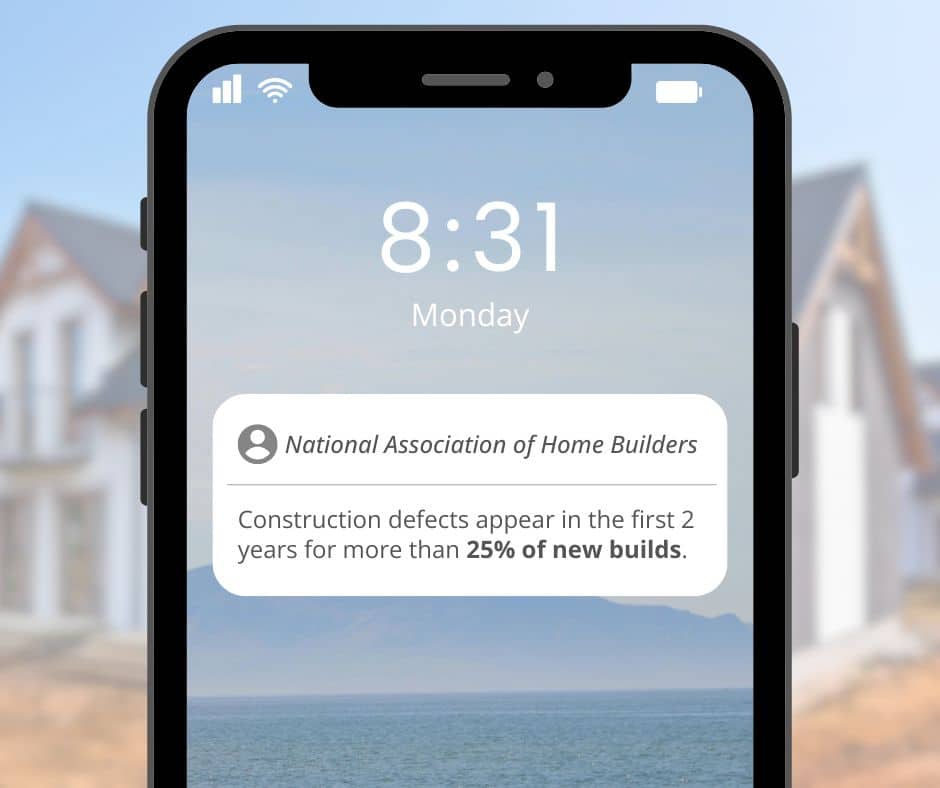
Common Related Questions
Do I need an inspection if my builder offers a warranty?
Yes. Warranties help, but catching issues before move-in prevents disruption.
How long does an inspection take?
Most final inspections last two to three hours, depending on size and complexity.
Will my builder fix everything the inspector finds?
Reputable builders usually address legitimate, documented defects before closing.
Can an inspector join my final walkthrough?
Yes. Many buyers choose this for added assurance.
When to Call a Professional
If you are under contract for a new home, schedule your inspection well before closing so the builder has time to make repairs. For the most thorough assessment, arrange both a pre-drywall and a final inspection.
The first confirms that hidden systems are functional. The second ensures the finished home meets expectations. Choose an inspector with experience in new construction and a detailed approach. They will know where builders are most likely to cut corners, how to identify hidden problems, and how to present findings in a way that gets results.
All Coast Home Inspections brings extensive experience with Houston’s building standards and climate challenges, ensuring your home is inspected with local expertise.
Conclusion
A new home may look flawless, but hidden defects are common. From missed safety features to workmanship errors, these issues can lead to costly repairs if left unchecked. A professional home inspection for a new build gives you the knowledge and leverage to move in with confidence.
All Coast offers comprehensive new build inspections tailored to the unique conditions of Houston and surrounding areas. Contact us today to schedule yours and protect your investment from the start.

